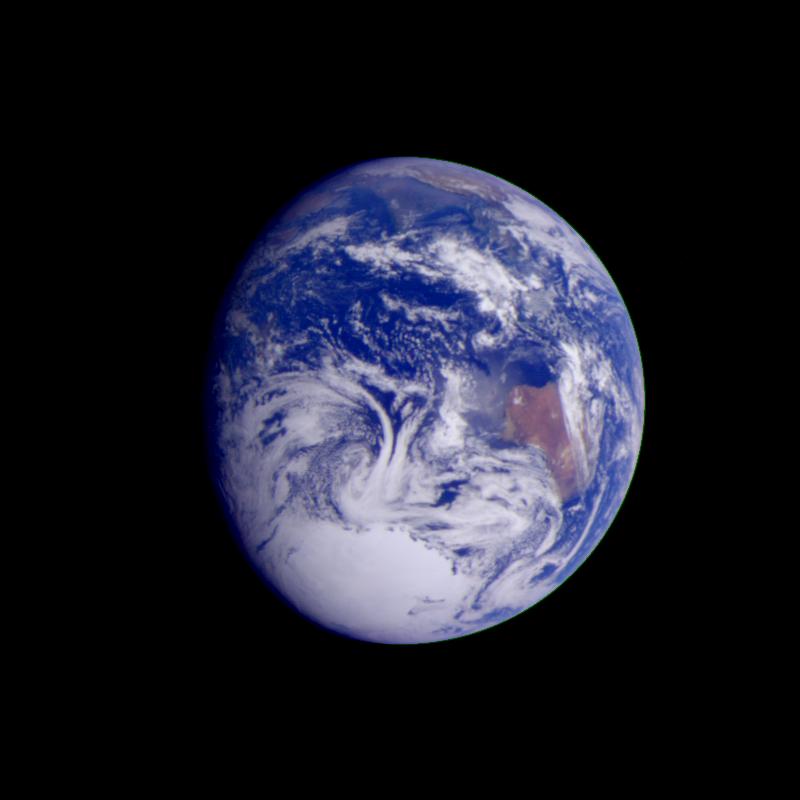Earth

Image courtesy Nasa
Diameter: 12742 kilometers
Mass: 1 of Earth
Orbit around sun: 365
Surface Temperature: -89 degrees to 58 degrees centigrade
Moons: 1
The Earth is 32% iron, 30% oxygen, 15% silicon, 14% magnesium, 3% sulfur, 2% nickel, about 1.5% calcium and 1.5% aluminium. That leaves just over 1% for all the elements in our periodic table.
Water covers approximately 70.8% of the Earth`s surface. It is the most essential part of the temperature and weather regulation that exists. Currents flowing around the Planet help to control the seasons in different parts of the world by acting sort of like a dampening effect of the Sun moving from tropic to tropic.
The Earth`s crust is broken up into tectonic plates that push and pull against each other causing the earthquakes that we experience. Volcanoes create new mountains and destroy old landscapes but nothing like in the past. In the early stages of Earth`s history there would have been no solid surface until the heat of the creation started to be lost.
| Earth in other languages:- |
| Cebuano: | kalibutan |
| Chinese: | dìqiú 地球 |
| French: | f terre |
| German: | f erde |
| Greek: | f Γη |
| Indonesian: | bumi |
| Italian: | f terra |
| Japanese: | chikyuu 地球 |
| Nederlands: | c aarde |
| Norwegian: | jorden |
| Polish: | f ziemia |
| Portuguese: | f terra |
| Spanish: | f tierra |
| Tagalog: | lupa |
| Turkish: | dünya |